| Ethmophyllum | |
|---|---|
 | |
| E. whitneyi | |
| Scientific classification | |
| Kingdom: | Animalia |
| Phylum: | Porifera |
| Genus: | Ethmophyllum |
| Ethmophyllum | |
|---|---|
 | |
| E. whitneyi | |
| Scientific classification | |
| Kingdom: | Animalia |
| Phylum: | Porifera |
| Genus: | Ethmophyllum |

The Burgess Shale is a fossil-bearing deposit exposed in the Canadian Rockies of British Columbia, Canada. It is famous for the exceptional preservation of the soft parts of its fossils. At 508 million years old, it is one of the earliest fossil beds containing soft-part imprints.
The Cambrian Period was the first geological period of the Paleozoic Era, and of the Phanerozoic Eon. The Cambrian lasted 55.6 million years from the end of the preceding Ediacaran Period 541 million years ago (mya) to the beginning of the Ordovician Period 485.4 mya. Its subdivisions, and its base, are somewhat in flux. The period was established by Adam Sedgwick, who named it after Cambria, the Latin name of Wales, where Britain's Cambrian rocks are best exposed. The Cambrian is unique in its unusually high proportion of lagerstätte sedimentary deposits, sites of exceptional preservation where "soft" parts of organisms are preserved as well as their more resistant shells. As a result, our understanding of the Cambrian biology surpasses that of some later periods.
The PaleozoicEra is the earliest of three geologic eras of the Phanerozoic Eon. It is the longest of the Phanerozoic eras, lasting from 541 to 251.902 million years ago, and is subdivided into six geologic periods : the Cambrian, Ordovician, Silurian, Devonian, Carboniferous, and Permian. The Paleozoic comes after the Neoproterozoic Era of the Proterozoic Eon and is followed by the Mesozoic Era.

Trilobites are a group of extinct marine arachnomorph arthropods that form the class Trilobita. Trilobites form one of the earliest-known groups of arthropods. The first appearance of trilobites in the fossil record defines the base of the Atdabanian stage of the Early Cambrian period, and they flourished throughout the lower Paleozoic era before beginning a drawn-out decline to extinction when, during the Devonian, all trilobite orders except the Proetids died out. Trilobites disappeared in the mass extinction at the end of the Permian about 252 million years ago. The trilobites were among the most successful of all early animals, existing in oceans for over 300 million years.
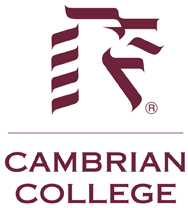
Cambrian College is a college of applied arts and technology in Greater Sudbury, Ontario, Canada. Established in 1967, and funded by the province of Ontario, Cambrian has campuses in Sudbury, Espanola and Little Current.
Cambrian Railways owned 230 miles (370 km) of track over a large area of mid-Wales. The system was an amalgamation of a number of railways that were incorporated in 1864, 1865 and 1904. The Cambrian connected with two of the larger railways to give connections to the North West of England, via the London and North Western Railway; and with the Great Western Railway for connections between London and North Wales. The Cambrian Railways amalgamated with the Great Western Railway on 1 January 1922 as a result of the Railways Act 1921. The name is continued today in the route known as the Cambrian Line.

The Cambrian Line is a railway that runs from Shrewsbury to Aberystwyth and Pwllheli, both on the west coast of Wales. The line from Dovey Junction to Pwllheli is sometimes called the Cambrian Coast Line.
The Furongian is the fourth and final series of the Cambrian. It lasted from 497 to 485.4 million years ago. It succeeds the Miaolingian series of the Cambrian and precedes the Lower Ordovician Tremadocian stage. It is subdivided into three stages: the Paibian, Jiangshanian and the unnamed 10th stage of the Cambrian.
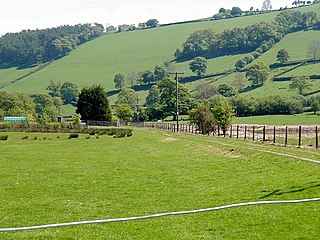
The Van Railway was a standard gauge railway in mid Wales. The line was built in 1871 to link the highly productive lead mines at Van, near Llanidloes to the main Cambrian line at Caersws. The mines closed in 1920, but the railway remained open until 1940.
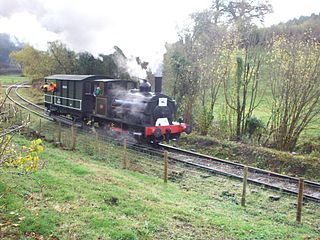
The Tanat Valley Light Railway (TVLR) was a 15-mile (24 km) long standard gauge light railway. It ran westwards from Llanyblodwel in Shropshire, about 5 miles or 8 km south-west of Oswestry. It crossed the Wales–England border and continued up the Tanat valley, terminating at Llangynog in Powys. It opened in 1904, providing access to a fairly remote area, and transport facilities for slate production and agriculture.
The small shelly fauna, small shelly fossils (SSF), or early skeletal fossils (ESF) are mineralized fossils, many only a few millimetres long, with a nearly continuous record from the latest stages of the Ediacaran to the end of the Early Cambrian Period. They are very diverse, and there is no formal definition of "small shelly fauna" or "small shelly fossils". Almost all are from earlier rocks than more familiar fossils such as trilobites. Since most SSFs were preserved by being covered quickly with phosphate and this method of preservation is mainly limited to the Late Ediacaran and Early Cambrian periods, the animals that made them may actually have arisen earlier and persisted after this time span.
The Cambrian explosion or Cambrian radiation was an event approximately 541 million years ago in the Cambrian period when most major animal phyla appeared in the fossil record. It lasted for about 20–25 million years and resulted in the divergence of most modern metazoan phyla. The event was accompanied by major diversification of other organisms.
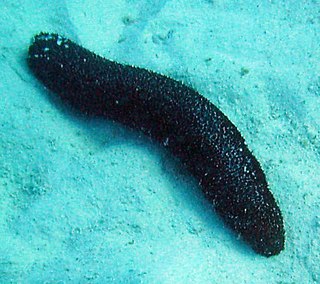
Deuterostomes comprise a superphylum of animals. It is a sister clade of Protostomia, with which it forms the Nephrozoa clade.
The Oswestry and Newtown Railway was a railway line that ran from Mid Wales to the Shropsire border town of Oswestry, later a constituent part of the Cambrian Railways.

The Oswestry, Ellesmere and Whitchurch Railway was a railway line that ran from Oswestry in Shropshire to Whitchurch, Shropshire, via Ellesmere and the Welsh borders. It was a constituent part of the Cambrian Railways.

The Newtown and Machynlleth Railway (N&MR) was a short railway created to allow the Oswestry and Newtown Railway and the Mid-Wales Railway access to the Mid-Wales market town of Machynlleth, from their communal station at Newtown, Powys. Crossing the River Severn and the Cambrian Mountains, it was completed in 1863 and became part of the Cambrian Railways system in 1864.
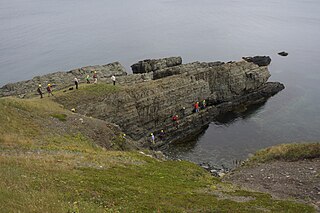
The Terreneuvian is the lowermost and oldest series of the Cambrian geological system. Its base is defined by the first appearance datum of the trace fossil Treptichnus pedum around 541 million years ago. Its top is defined as the first appearance of trilobites in the stratigraphic record around 521 million years ago. This series was formally ratified by the International Commission on Stratigraphy in 2012.
Cambrian Stage 3 is the still unnamed third stage of the Cambrian. It succeeds Cambrian Stage 2 and precedes Cambrian Stage 4, although neither its base nor top have been formally defined. The plan is for its lower boundary to correspond approximately to the first appearance of trilobites, about 521 million years ago, though the globally asynchronous appearance of trilobites warrants the use of a separate, globally synchronous marker to define the base. The upper boundary and beginning of Cambrian Stage 4 is informally defined as the first appearance of the trilobite genera Olenellus or Redlichia around 514 million years ago.
Cambrian Stage 4 is the still unnamed fourth stage of the Cambrian and the upper stage of Cambrian Series 2. It follows Cambrian Stage 3 and lies below the Wuliuan. The lower boundary has not been formally defined by the International Commission on Stratigraphy. One proposal is the first appearance of two trilobite genera, Olenellus or Redlichia. Another proposal is the first appearance of the trilobite species Arthricocephalus chauveaui. Both proposals will set the lower boundary close to 514 million years ago. The upper boundary corresponds to the beginning of the Wuliuan.
Cambrian Series 2 is the unnamed 2nd series of the Cambrian. It lies above the Terreneuvian series and below the Miaolingian. Series 2 has not been formally defined by the International Commission on Stratigraphy, lacking a precise lower boundary and subdivision into stages. The proposed lower boundary is the first appearance of trilobites which is estimated to be around 521 million years ago.
| This poriferan- (or sponge-) related article is a stub. You can help Wikipedia by expanding it. |